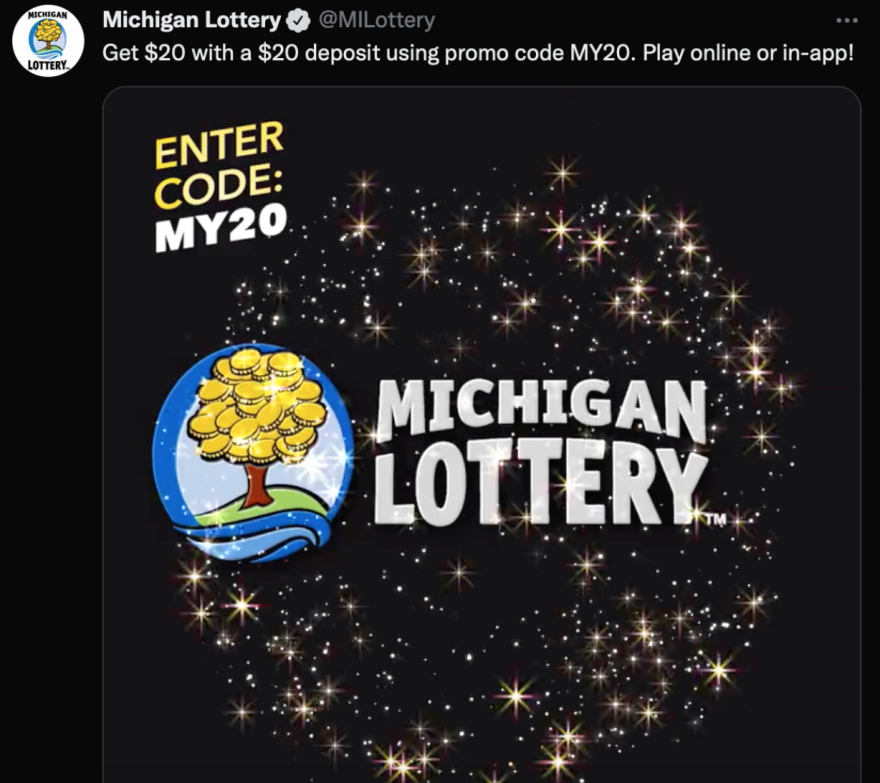They are embedded in Twitter feeds, between Snapchat stories, sharing a television screen while Cade Cunningham attempts a free-throw. Advertisements for sports gambling companies are saturated throughout the media.
Advertising for companies like FanDuel, DraftKings and BetMGM is still in its infancy despite the prevalence of these ads. Local TV advertising spots cost sports gambling companies $10.7 million in the United States in the beginning of 2019. This has risen to $154 million in 2021 and is expected to surpass$550 million by 2024.
Dr. Teresa Mastin is a professor and chairperson in Michigan State’s Department of Advertising and Public Relations. She said that it is important to view ads of gambling companies in the same context of ads for tobacco or alcohol. Addiction is a major component for the consumers of these products. Gambling is no different.
“What they are focusing on is the exciting parts,” said Mastin. “The people who have an issue with addiction are the ones who are most likely to see these ads and the ones who will struggle the most.”
Although Mastin said there are obvious flaws in this practice of focusing on the “highlights” of gambling, she doesn’t foresee much changing in the future for gambling advertisements.
“There is a lot of money to be made so that means it is unlikely that there will be changes anytime soon,” she said. “It is important for young people to understand that what they are seeing. We need to help people contextualize what the advertisement is really for and make sure they know that the odds are not in their favor.”
Julio Garza is part of the demographic that sports gambling companies are trying to reach with their advertisements. Garza is 21, and a senior at Eastern Michigan University.
“I do believe that I am a part of the target audience for these advertisements because of the combination of how often I see these advertisements on social media, how often I sports bet, and I know so many people my age that do sports bet,” said Garza.
Garza said he noticed a recent ad for MGM Casino and Sportsbook while he was viewing his friend’s Snapchat stories.
“The first thing that came to mind about this ad was the extremely large font saying ‘NEW USERS SPECIAL OFFER.’ Also, another thing that I noticed was Jamie Foxx was endorsing the ad. It seems most casinos and sportsbooks have a celebrity endorser that they use to promote new users to sign up and receive some type of ‘risk-free bet’ or an incentive for free play bonus money,” he said.
BMC Public Health conducted a study from 2015-2020 on the “rapid emergence of gambling advertising.” The study focused on the “content, delivery and structural features incorporated within emerging gambling advertising.”
The study concluded that as sports gambling becomes legal in more and more states, the intensity of the advertising increases. This results in more advertisements that are interactive than most other forms of advertising. Promotional content is incorporated into the ads and presented directly to the viewer. Garza notices these ads regularly and they tend to be very enticing to him.
“I feel that when I get the promotions in my email or see it on social media that it's a too good to be true type of feeling and I don't want to miss out on what I could win,” Garza said.
Taliah Martinez is a junior at Michigan State studying creative advertising. She likened ads for sports gambling companies to more interactive versions of most tobacco and alcohol ads. Martinez said that when she notices these ads, they remind her of “less annoying pop-up ads” because of the mediums they are shown on.
If Martinez were to change something about how sports gambling ads work, it would be to make them more self explanatory. She says that she notices these ads and notices that they can be enticing. However, because she is not very familiar with sports betting, Martinez is not inclined to click on these ads.
Gambling ads are a new frontier. Advertisers will adapt as sports gambling continues to become legalized in more states. Currently, the top gambling companies are the ones pumping out most of the ads by a wide margin. For example, the top five gambling companies run 90% of the gambling ads inMichigan.
These figures will change drastically as the gambling industry continues to grow. These companies are taking advantage of this ripe situation in ways that are similar to other markets like alcohol and tobacco.

